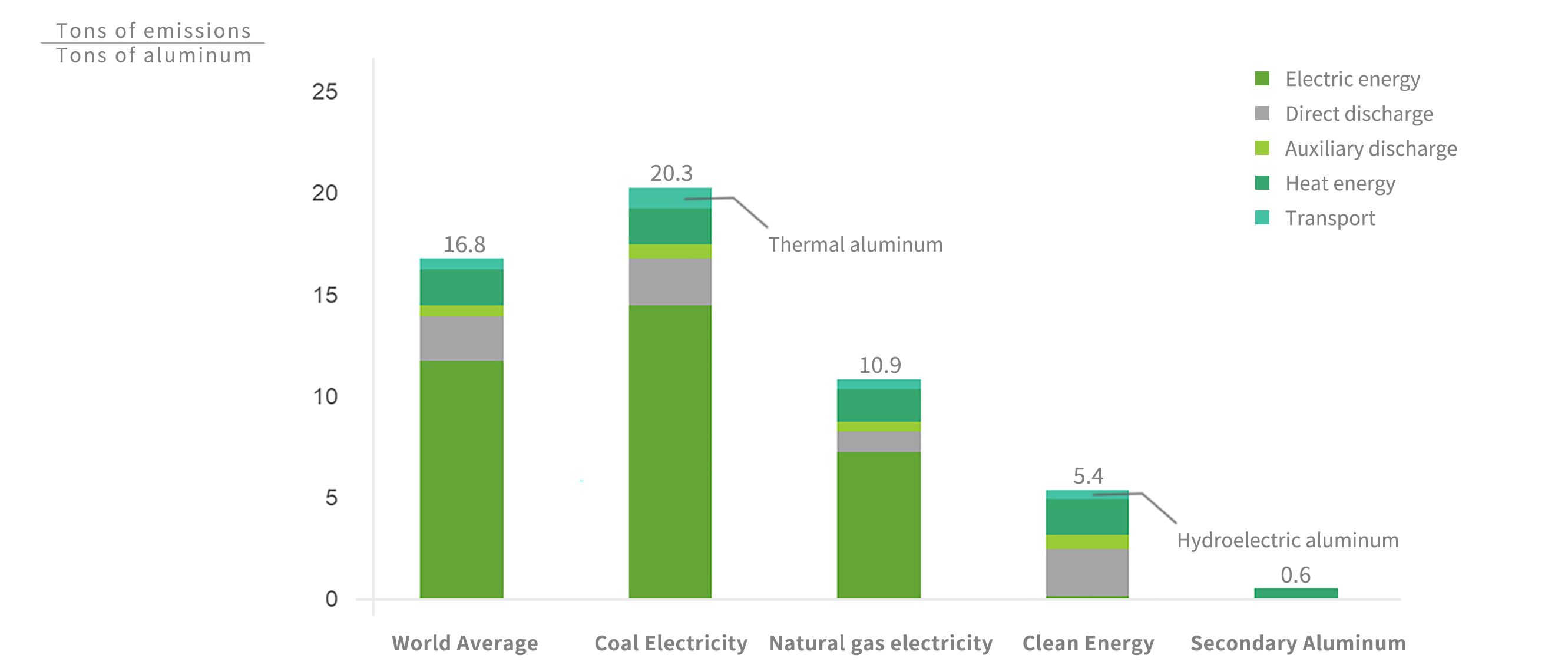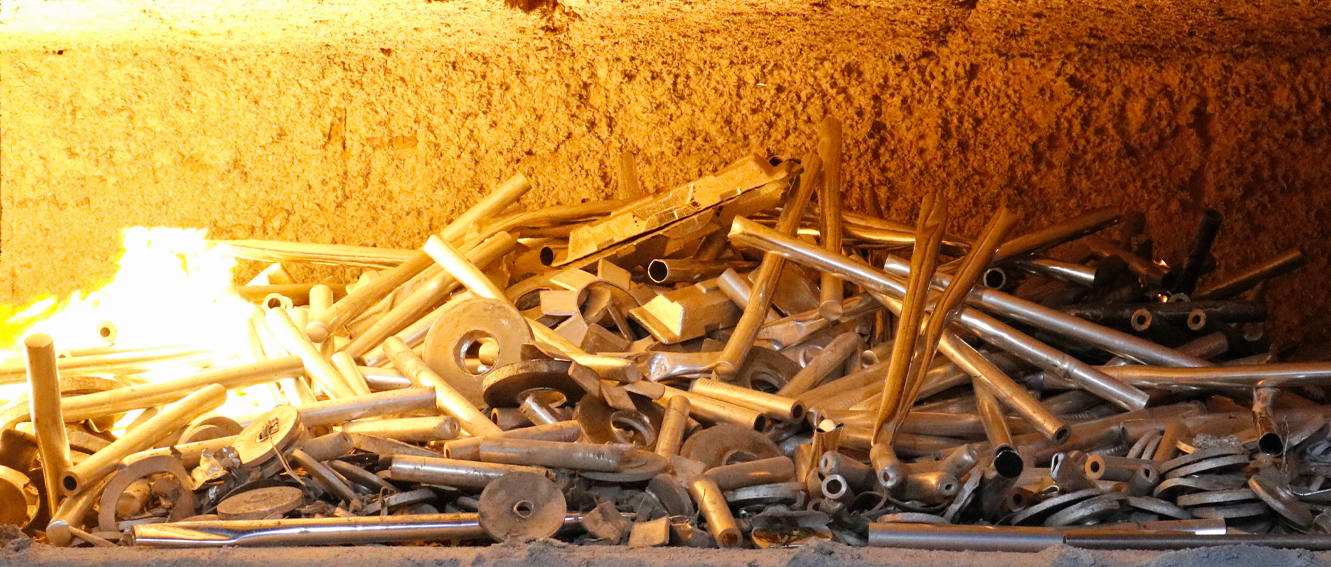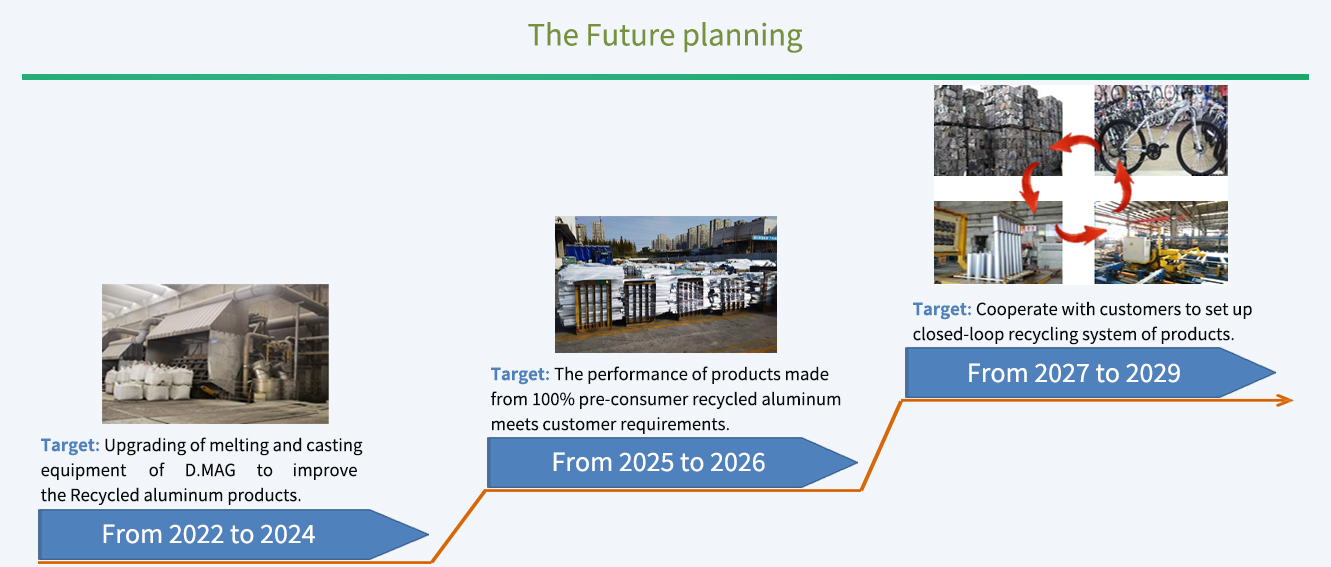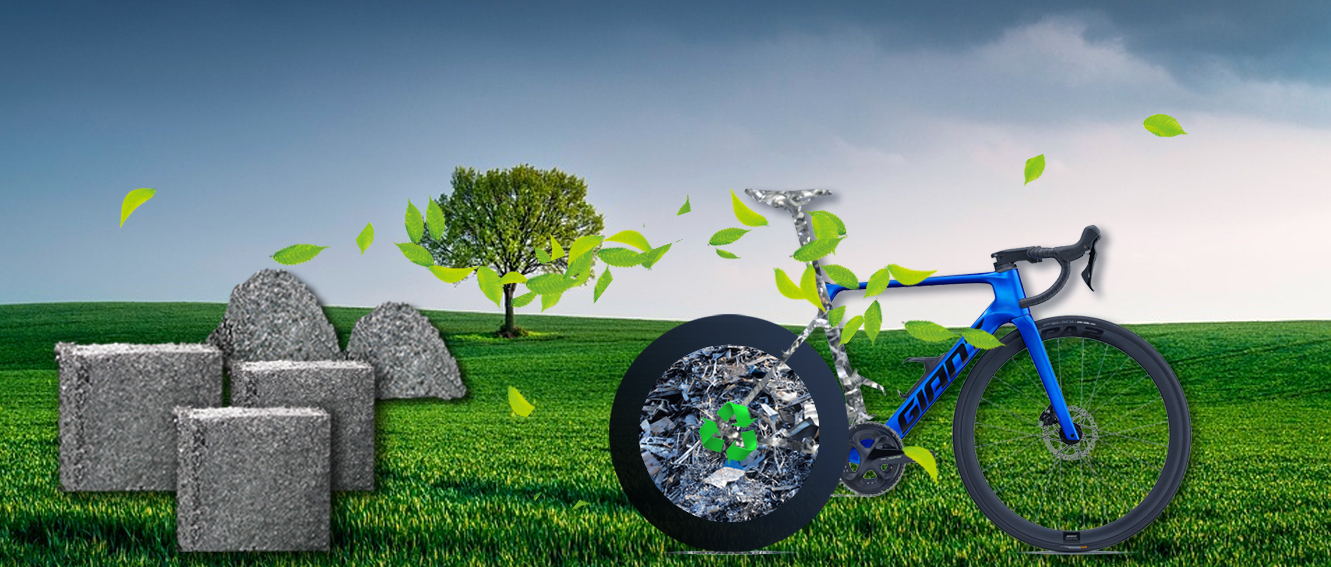{{desc.title}}
{{desc.note}}
Secondary aluminum refers to the aluminum alloy obtained after the corresponding production process using secondary aluminum as the main raw material. Aluminum is highly corrosion-resistant, has a very low degree of loss in the process of use, and will not lose its basic characteristics after repeated recycling, so it has a very high value of reclaiming and recycling. In addition to the significant economic advantages, secondary aluminum can also effectively save natural resources and protect the ecological environment. D.MAG takes low carbon as the strategic goal of enterprise R&D and production, and is committed to create a better future.

The production of 1 ton of primary aluminum ingots needs to emit 16.5 tons of carbon dioxide into the atmosphere, while the production of 1 ton of secondary aluminum only needs to emit 0.98 tons of carbon dioxide, reducing carbon dioxide emission by up to 94%. In addition, for the use of secondary aluminum in production, energy consumption is only 3%~5% of energy consumption of electrolytic aluminum, more than 10 tons of water are saved, while the treatment of solid waste, waste liquid and waste residue is reduced, with obvious low-carbon, energy saving and emission reduction advantages.



The application fields of secondary aluminum products mainly include industries such as traditional and new energy vehicles, motorcycles, electronic information, machinery manufacturing and construction hardware, etc. At present, automobiles, motorcycles and electric vehicles account for nearly 70% of the entire downstream consumption, and are the main consumption areas of secondary aluminum products.
Secondary aluminum production process includes processes such as pretreatment, material feeding, fusion, skimming, refining, alloying treatment and casting, we have made great progress in the raw material grading pretreatment technology and subsequent graded fusion technology, and are approaching the level of developed countries in Europe and the United States.